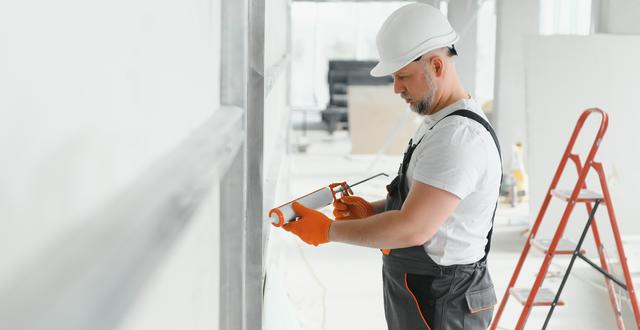Installing new drywall is a common home improvement project that can significantly enhance the appearance and functionality of a space. In this article, we'll discuss the essential materials needed for a successful drywall installation, ensuring a smooth, professional finish.
Drywall Selection
The first step in any drywall installation project is choosing the right type of drywall for your specific needs:
Standard Drywall
The most common choice for residential projects, standard drywall comes in various thicknesses, with 1/2-inch being the most popular.
Moisture-Resistant Drywall
Ideal for bathrooms, kitchens, and laundry rooms, this type of drywall has a water-resistant core to prevent moisture damage.
Fire-Resistant Drywall
Designed to slow the spread of fire, this drywall option is suitable for use in garages, furnace rooms, and other areas where fire resistance is essential.
Soundproof Drywall
This type of drywall helps reduce sound transmission between rooms, making it perfect for home theaters or bedrooms.
Fasteners and Adhesives
Properly securing the drywall to the framing is crucial for a stable and long-lasting installation:
Drywall Screws
Choose the appropriate length and type of drywall screws for your specific project, ensuring a secure hold.
Drywall Nails
While less common than screws, some installers still use drywall nails for quick installation.
Drywall Adhesive
Applying adhesive to the studs before attaching the drywall can reduce the number of fasteners needed and minimize the risk of nail pops.
Taping and Finishing Materials
Achieving a smooth, seamless finish requires the right taping and finishing materials:
Joint Compound
Also known as mud, joint compound is used to fill gaps, cover screw and nail heads, and smooth over joints.
Drywall Tape
Choose between paper or fiberglass mesh tape to reinforce the joint compound and prevent cracking.
Corner Bead
This material provides a clean, sharp edge on outside corners, protecting the drywall from damage.
Sanding Materials
Sanding is an essential step in preparing the drywall for painting:
Sanding Block
A sanding block helps evenly distribute pressure for a smooth finish.
Sanding Paper
Choose fine-grit sanding paper for finishing work, and medium-grit for rougher surfaces.
Sanding Sponge
This versatile tool can be used wet or dry and is ideal for sanding irregular surfaces or corners.
Safety Gear
Protecting yourself during drywall installation is crucial for a safe and enjoyable project:
Dust Mask
Wear a dust mask to prevent inhalation of drywall dust during sanding.
Safety Goggles
Protect your eyes from dust and debris with safety goggles.
Gloves
Wearing gloves can help protect your hands from sharp tools and materials.
Installing new drywall can be a rewarding home improvement project with the right materials and preparation. By selecting the appropriate drywall, fasteners, taping and finishing materials, and safety gear, you can ensure a professional, flawless finish that enhances your living space.






comments